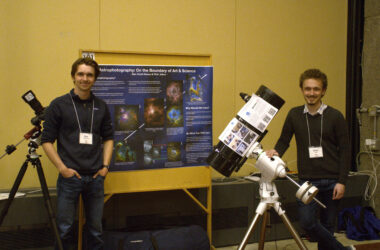At the end of this semester, I will have completed half of my neuroscience undergraduate degree at McGill, and the number of women professors in my science courses so far is slightly alarming. Out of the 22 professors that I have had spanning disciplines like neuroscience, biology, mathematics, physiology, and computer science, only four of them were women—a measly 18 per cent. Many courses offered by the Faculty of Science are taught by more than one professor, and PHGY 311 is a prime example, with four different instructors leading the class over the course of one semester. Each time we finished a section of this course, my friends and I hoped that the new professor would be a woman. But with only three classes left, we now know that we will not be getting the opportunity to learn about ion channels from a woman professor. Many would argue that this doesn’t matter, but it reflects a broader gender inequity that is stubbornly entrenched across scientific disciplines.
PHGY 311 is not an outlier; it is the norm. In McGill’s physiology department more broadly, men represent 72 per cent of all professors. It demonstrates the troubling reality that, on average, academic positions in the faculties of science and engineering are primarily held by men. “Turning the Tide for Academic Women in STEM: A Postpandemic Vision for Supporting Female Scientists” is a recent study investigating the challenges women encountered in academia throughout the COVID-19 pandemic. The researchers noted that, although inclusivity in science has increased over the past decades, underrepresentation, salary discrepancies, and increased career-related obstacles are some of the challenges that women in science, technology, engineering, and mathematics (STEM) continue to face.
The pandemic alone did not cause these issues—it exacerbated the effects of pre-existing inequalities between men and women academics. Women spent less time doing research throughout the pandemic because care responsibilities and other traditionally gendered tasks fell disproportionately on their shoulders. A meta-research study also found that the number of women who were first authors on COVID-19 papers published throughout the pandemic decreased by a staggering 19 per cent compared to 2019.
The phenomenon behind gender disparities, such as the decreased number of research publications, is known as the leaky pipeline, which describes how gender biases may limit women’s opportunities to ascend to the highest positions within STEM. These barriers can have devastating effects at various stages of women’s careers, such as hiring, funding, publishing, and professional advancement. The leaky pipeline problem has resulted in a persistent gender gap among STEM academics despite the significant increase in the number of women pursuing advanced degrees in the sciences.
Julie O’Reilly, a second-year PhD student in the Bourque Lab at the Research Institute of the McGill University Health Centre (RI-MUHC), has noticed that the number of women in McGill’s science graduate programs contrasts starkly with the number of women who occupy academic positions at McGill.
In an interview with The McGill Tribune, O’Reilly shared that, even though she has never consciously thought that women would be worse in STEM, she has realized that an unconscious bias, largely perpetuated by outdated social norms, has shaped the mental image that she has of principal investigators.
“When there’s a great discovery and it’s made by a female, then the article will mention: ‘It’s a female!’ and [the focus] would be about [gender], which shouldn’t be the case,” O’Reilly said.
Intersectional identities can further intensify the inequalities that women in STEM may experience. The term “double bind” encompasses both the institutional and interpersonal sexism and racism that women who are Black, Indigenous, or people of colour face. Another such factor is the variability across specific STEM fields. Some studies have shown that women majoring in physics, engineering, and computer science (PECS) are outnumbered by men who do worse academically. Even more surprisingly, the researchers determined that student-level factors, such as socioeconomic status, self-confidence in scientific abilities, and home resources do not sufficiently explain the gender discrepancies witnessed in PECS.
I sat down with Longyu Li, a third-year student in mechanical engineering at McGill, to learn about her experience as a minority in a major that is still very male-dominated.
“I know that in other engineering departments, there’s quite a few [women students]. Mechanical [engineering] is just that one department that’s mostly boys,” Li said. “I think that if there were more activities and social events, [we would feel better supported].”
When looking at the faculty members in the mechanical engineering department at McGill, the number of male professors significantly overshadows that of women academics. Of the 27 professors listed on the department’s website, only three are women.
The lack of representation of transgender and non-binary people in STEM is representative of a larger narrative that erases this community from key industries and fields of study. Queer McGill said in an email statement to The McGill Tribune that the history of gendered violence in Quebec may influence the makeup of the STEM field today.
“To be a woman in a STEM program is a position especially charged in Quebec in light of the École Polytechnique massacre, which targeted women in an engineering class,” Queer McGill wrote. “We [do note] that many students and staff run initiatives in an attempt to overcome imposter syndrome, lack of equal opportunities, and other barriers related to being a minority in STEM programs.”
Such initiatives on campus include Diversity in Math, the equity discussion group led by professor Rosalie Bélanger-Rioux, and Promoting Opportunities for Women in Engineering McGill.
“We would like to see these efforts shared and prioritized by the McGill administration,” Queer McGill wrote.
Sophia Moubarak shared some of her experiences as a third-year student in electrical engineering at McGill with the Tribune. When I asked if she could remember how many women professors she has had since she started university, Moubarak quickly responded that she indeed could, because the paltry number—four women professors out of 23—was so easy to recall.
“You can count your female professors on one hand,” Moubarak said.
In accordance with what seems to be the trend in STEM majors at McGill, only 22 per cent of professors in the Department of Electrical and Computer Engineering are women. Prior to starting her undergraduate studies, Moubarak knew that the demographic would be tilted towards men, but she still expected more inclusivity and better representation.
“If you see someone that you can maybe picture yourself as in the future, you tend to do better in those courses,” Moubarak said.
Some scholars have predicted that many STEM fields like computer science, surgery, and mathematics will not achieve gender parity within the next 100 years. Although the prediction may seem discouraging, there are changes that institutions can implement to fast-track their faculty memberships to better reflect the population. Increased support for scientists who are mothers will help alleviate some of the demands of childcare and domestic work. Advocacy committees can support women in STEM, especially racialized women, and raise awareness about the structural hurdles that prevent them from reaching the top. Pathways for career advancement should offer greater flexibility depending on the scientist’s particular circumstances, such as childcare and household responsibilities. For science to continue its innovative and transformative work in society, the STEM workforce needs to equip women with better resources and tools to succeed.








